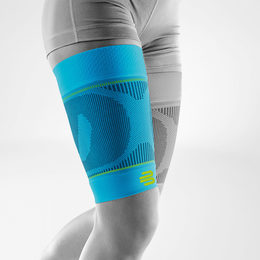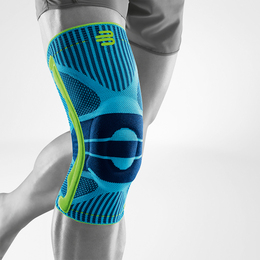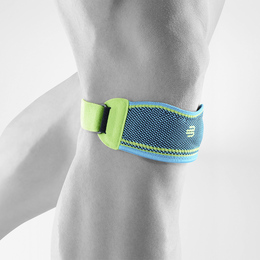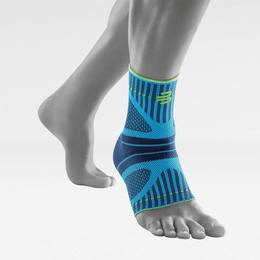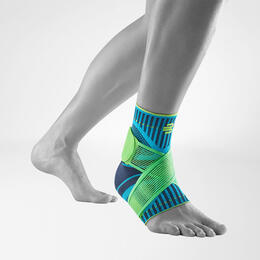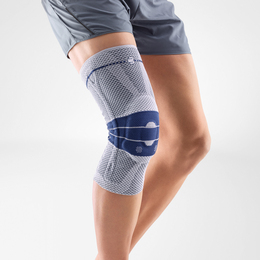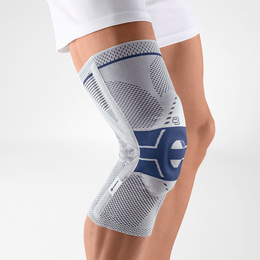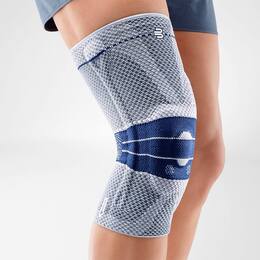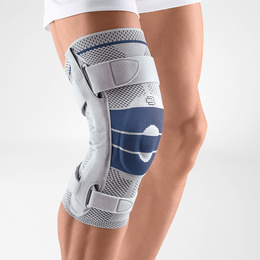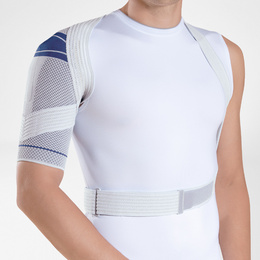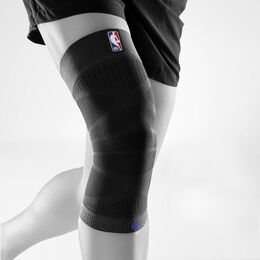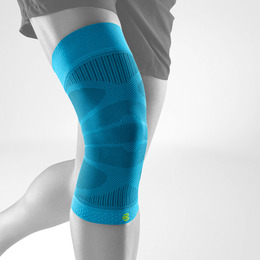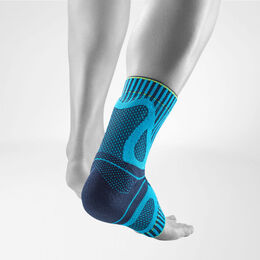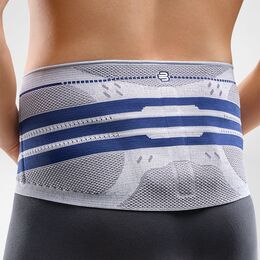Soccer requires quick, agile movements and long-lasting endurance, leaving players vulnerable to injury. Protecting yourself from pulled muscles, torn ligaments, and sprained joints is vital. In addition to a good stretch and warm-up routine, wearing a quality, medical-grade compression product can give your body the oxygenating circulation and support to avoid common twists, pulls and tears.
Protect Your Knees While Playing Soccer
Knee injuries are prevalent; in fact they are the most common injury reported by soccer players. Bauerfeind’s Sports Knee Support provides stability and protection against excessive strain and injuries to the muscles and ligaments that support the knee. This knee brace was designed with the needs of the athlete in mind: It is lightweight, breathable and stays in place during your run. When you’re done simply throw it in the wash and lay flat to dry.
Recover from a Knee Injury
If you are unfortunate enough to experience a knee injury, RICE Therapy is generally regarded as the most effective first-line treatment. Bauerfeind’s GenuTrain line of knee braces and supports provide the “C” (compression) in this treatment. Medical-grade compression increases oxygenating blood flow to the injured joint, reducing pain, swelling and recovery times.
Professional athletes and athletic trainers trust in Bauerfeind’s GenuTrain line to treat knee injuries.
Protect Your Ankles While Playing Soccer
Bauerfeind’s Sports Ankle Support and Sports Ankle Support Dynamic both provide stability and medical-grade compression to help protect your ankles from strain and injury. These supports are breathable, machine-washable and fit comfortably inside running shoes.
Recover from an Ankle Injury
Ankle sprain and achilles tendonitis are two of the most common soccer injuries, but they don’t have to take you off your feet for good. Healthcare professionals often suggest wearing a medical-grade compression brace or support as part of RICE Therapy for injury recovery. Bauerfeind’s MalleoTrain and AchilloTrain ankle supports offer several options for targeting and treating specific ankle injuries. These ankle braces are machine washable, moisture-wicking and made to fit comfortably into athletic shoes - making them perfect for dedicated runners.
Professional athletes and athletic trainers trust in Bauerfeind’s GenuTrain line to treat knee injuries.
FAQ’s:
What are the most common soccer injuries?
Some of the most common soccer injuries are Patellofemoral pain syndrome (runner's knee), torn ACL, pulled groin, hamstring pull/tear/strain, ankle sprain, shin splints, Achilles tendinitis, Iliotibial band syndrome (ITBS), and plantar fasciitis.
Do I need a knee brace for soccer?
If you’ve ever suffered a knee injury, our physical therapist recommends wearing a knee brace or support during sports or exercise. Medical-grade compression found in Bauerfeind’s Knee Braces provides stability and oxygenating blood flow to the knee joint to reduce pain, inflammation and recovery times.
If you’ve never had a knee injury, you may still want to consider an athletic brace like the Bauerfeind Sports Knee Support to help protect your knee against excessive strain while playing soccer.
How do you prevent a pulled groin or hamstring during soccer?
Pulling a muscle in your upper leg is very common in soccer. While there is no silver-bullet to preventing these injuries, a good warm-up regimen, limiting training increases to 10% per week and wearing a medical-grade compression sleeve or support can help reduce your risk. At the first sign of pain, you should reduce your training and increase your rest to give your body time to heal.


